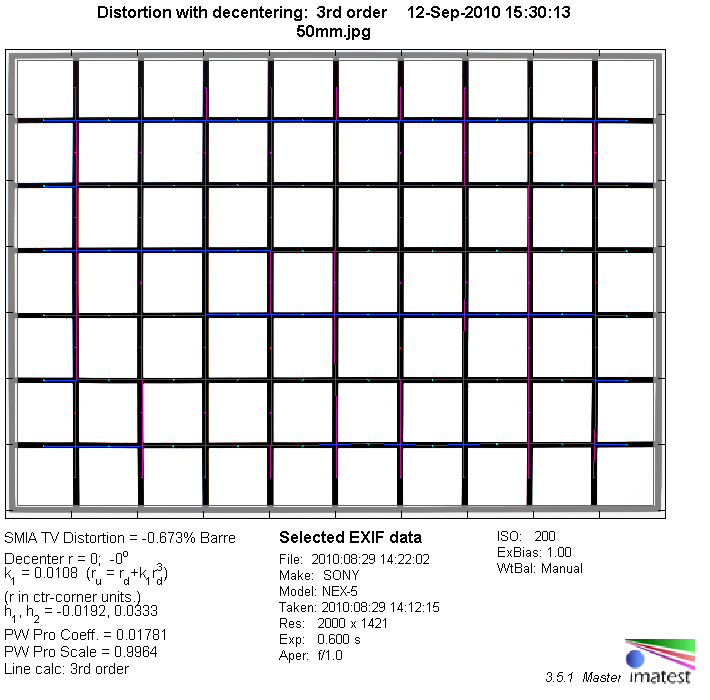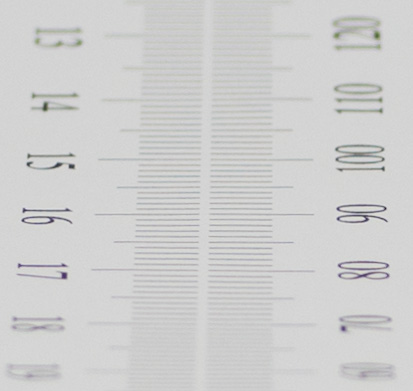|
Voigtlander Heliar 50mm f/3.5 (on Sony NEX) - Review / Test Report - Analysis |
|
Lens Reviews -
Sony Alpha/NEX (APS-C)
|
|
Page 2 of 3

Distortion
The Voigtländer lens produces a low amount of barrel distortion (~0.7%) which is usually not relevant in field conditions.

Vignetting
Typical for full format lenses it has no real issues with respect to light fall-off on an APS-C camera. At max. aperture the vignetting is barely something worry about in real world situations (@ 0.5EV) and it's absolutely negligible from f/5.6 onwards.

MTF (resolution)
The Heliar delivers a fairly impressive resolution across the tested aperture range although we wouldn't really confirm that it is really the "sharpest 50mm lens ever made". The center quality is already excellent at f/3.5 and the borders follow on a good level here. The borders receive a boost towards very good quality at f/5.6 which is also the sweet spot of the lens on the Sony NEX. Diffraction effects reduce the quality from f/11 onwards.
Please note that the MTF results are not directly comparable across the different systems!
Below is a simplified summary of the formal findings. The chart shows line widths per picture height (LW/PH) which can be taken as a measure for sharpness.
If you want to know more about the MTF50 figures you may check out the corresponding Imatest Explanations
Chromatic Aberrations (CAs)
Lateral CAs are very well controlled with an average pixel width at around 1px at the image borders. This isn't really objectionable in field conditions.

Bokeh
The Heliar 50mm f/3.5 is a fairly slow lens so it's relatively hard to produce a pronounced out-of-focus blur (go close). Out-of-focus highlights have a slightly nervous rendition and the discs aren't really circular towards the (APS-C) image corners. The quality of the blur in the critical focus transition zones is pretty smooth in the foreground, somewhat less so in the image background.

Bokeh Fringing / Longitudinal Chromatic Aberrations (LoCA)
LoCAs (non-coinciding focal planes of the various colors) are a common issue with relatively fast glass. As you can
notice below the halos have different colors - magenta (red + blue) in front the focus point and green beyond. Regarding the slow speed of the lens it is really only a small issue at f/3.5 (bokeh fringing does primarily occur at and below f/2.8).

|